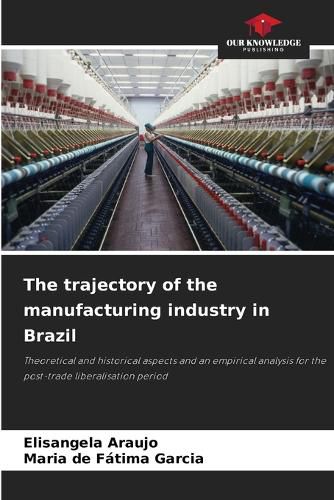Readings Newsletter
Become a Readings Member to make your shopping experience even easier.
Sign in or sign up for free!
You’re not far away from qualifying for FREE standard shipping within Australia
You’ve qualified for FREE standard shipping within Australia
The cart is loading…






Starting in the 1990s, the Brazilian economy entered a new pattern of development and external integration, given two events: economic liberalisation and price stabilisation, achieved with the Real Plan in 1994. In addition, the adoption of a floating exchange rate and the Inflation Targeting Regime, policies/institutions that substantially altered the conduct of macroeconomic policies, had a particular impact on the productive sector. Noteworthy is the trajectory of the manufacturing industry, which saw a steady decline in its relative share of GDP, in addition to a reduction in the trade balance of industrial products, especially those with higher technological content, at the same time as there was a return to commodities and basic products. This movement, which occurred in parallel with the weak performance and growing internal and external fragility of the Brazilian economy, sparked an intense debate about the structural change underway, its causes and consequences for the country's development, an issue that this research addresses from a theoretical, historical and empirical perspective.
$9.00 standard shipping within Australia
FREE standard shipping within Australia for orders over $100.00
Express & International shipping calculated at checkout
Stock availability can be subject to change without notice. We recommend calling the shop or contacting our online team to check availability of low stock items. Please see our Shopping Online page for more details.
Starting in the 1990s, the Brazilian economy entered a new pattern of development and external integration, given two events: economic liberalisation and price stabilisation, achieved with the Real Plan in 1994. In addition, the adoption of a floating exchange rate and the Inflation Targeting Regime, policies/institutions that substantially altered the conduct of macroeconomic policies, had a particular impact on the productive sector. Noteworthy is the trajectory of the manufacturing industry, which saw a steady decline in its relative share of GDP, in addition to a reduction in the trade balance of industrial products, especially those with higher technological content, at the same time as there was a return to commodities and basic products. This movement, which occurred in parallel with the weak performance and growing internal and external fragility of the Brazilian economy, sparked an intense debate about the structural change underway, its causes and consequences for the country's development, an issue that this research addresses from a theoretical, historical and empirical perspective.